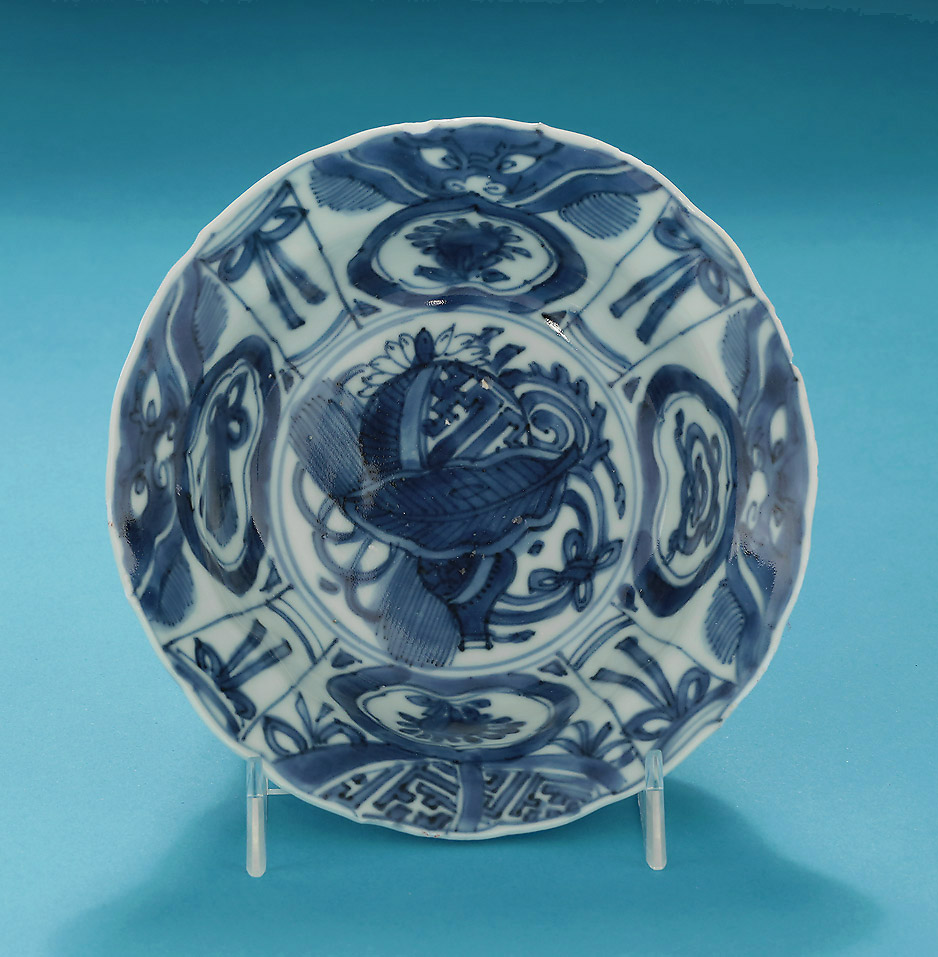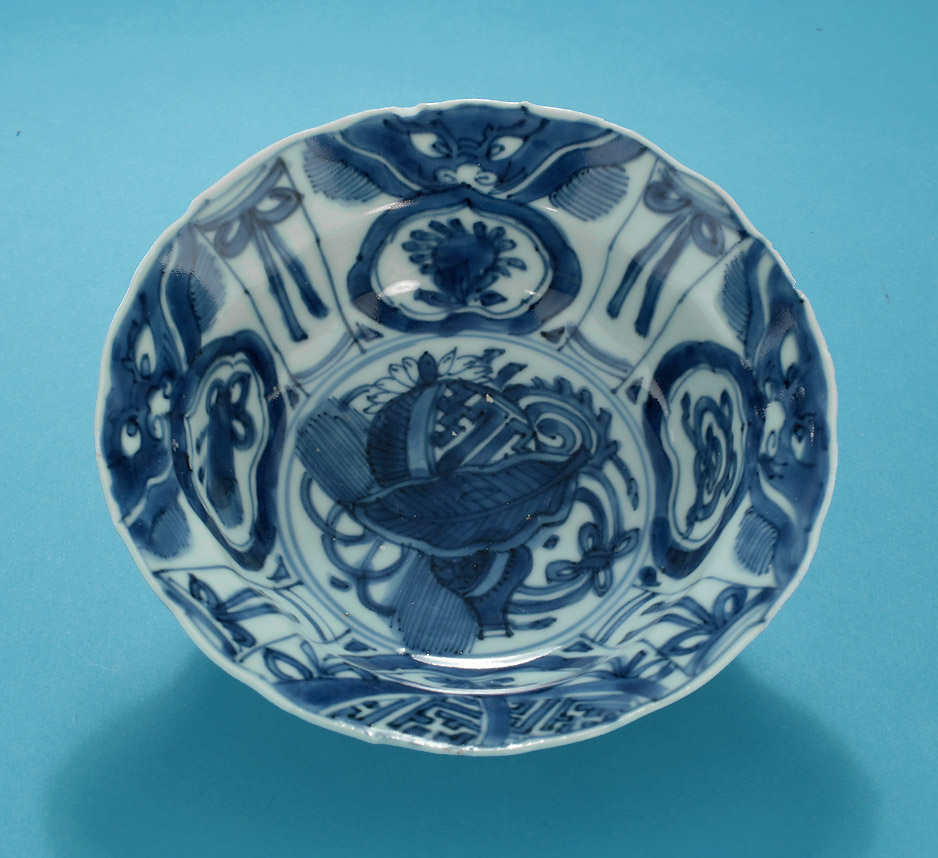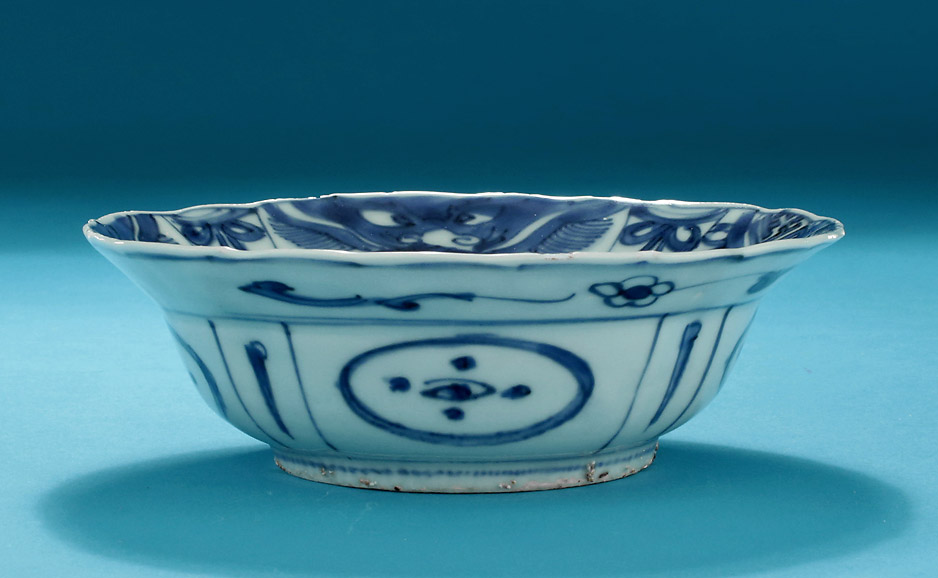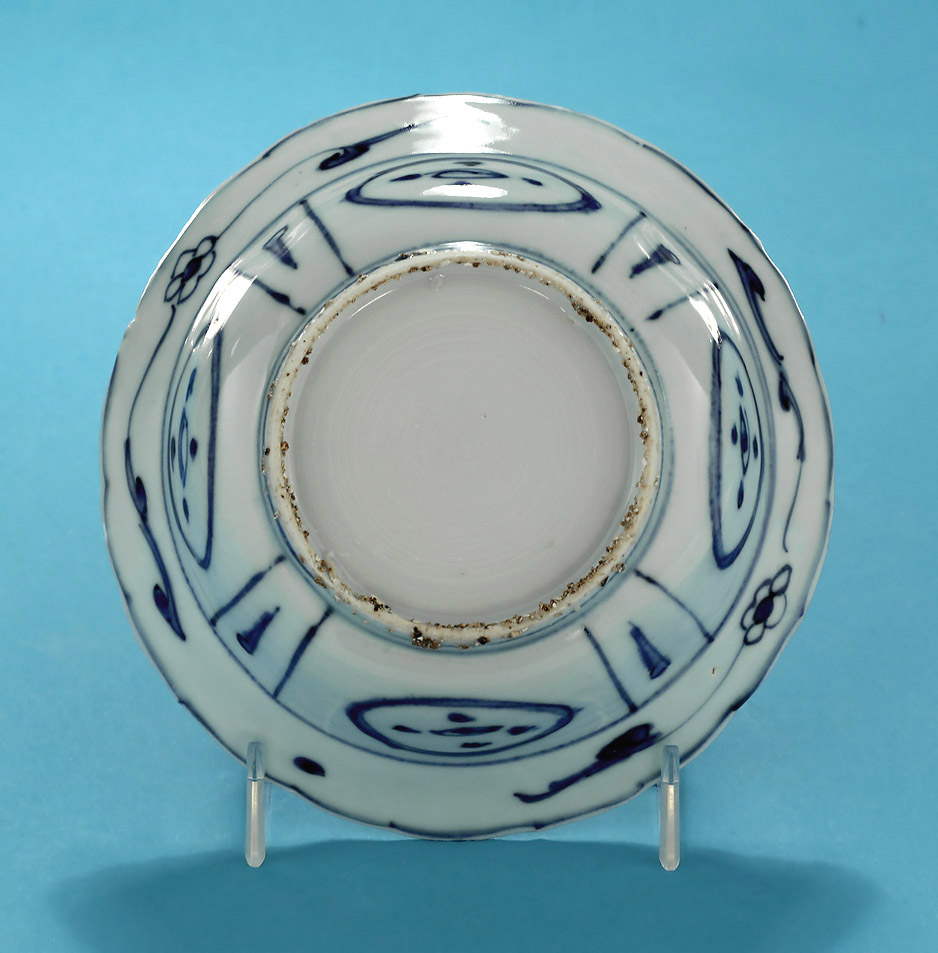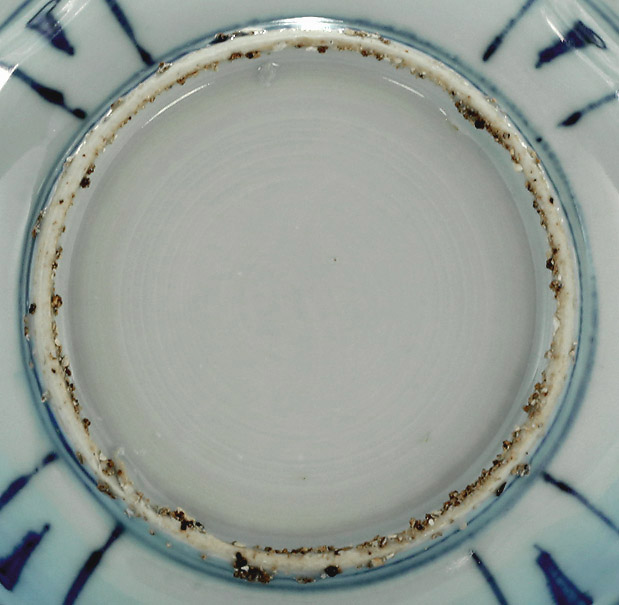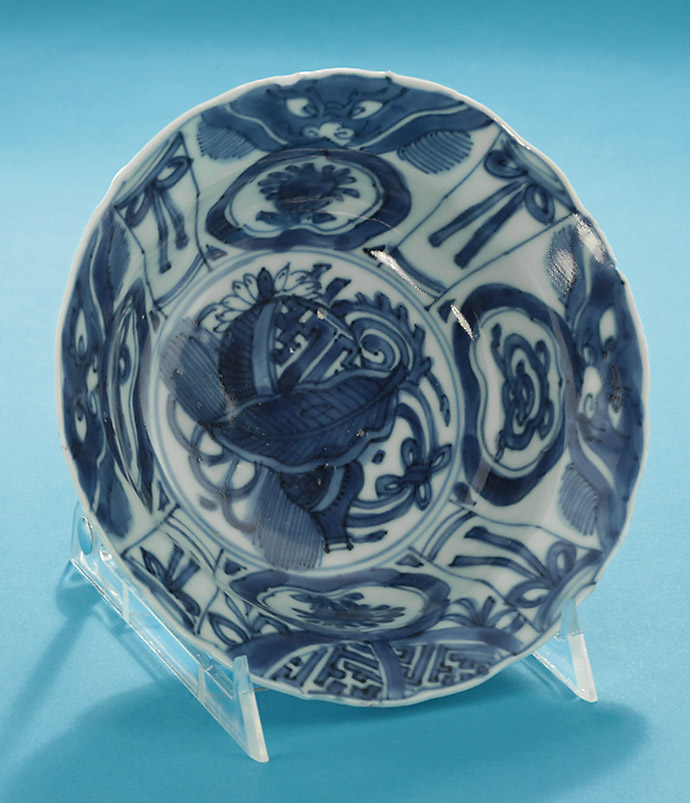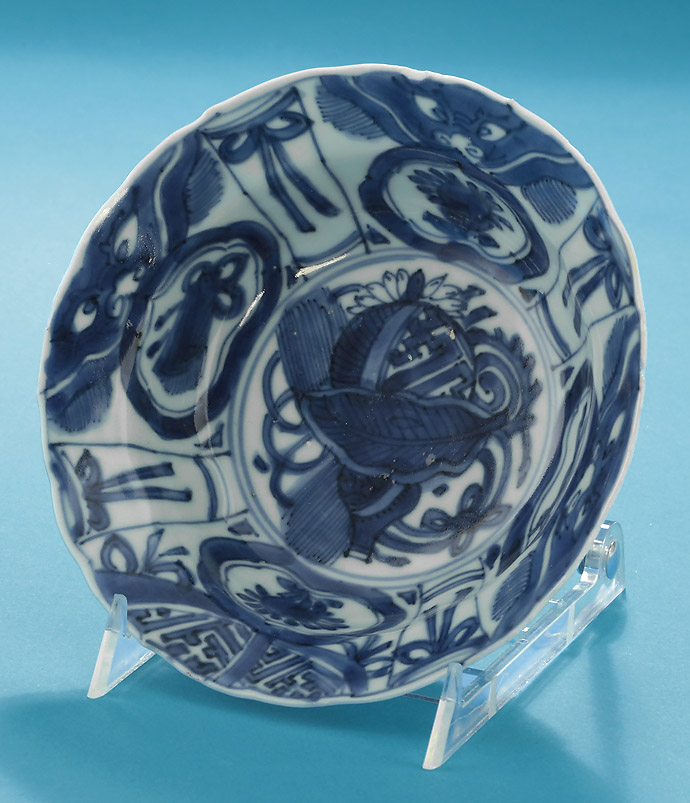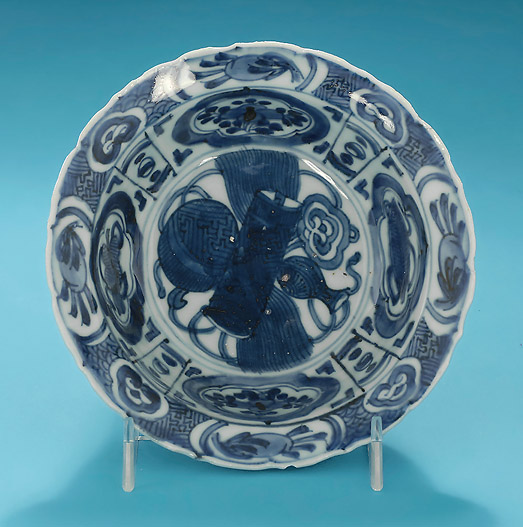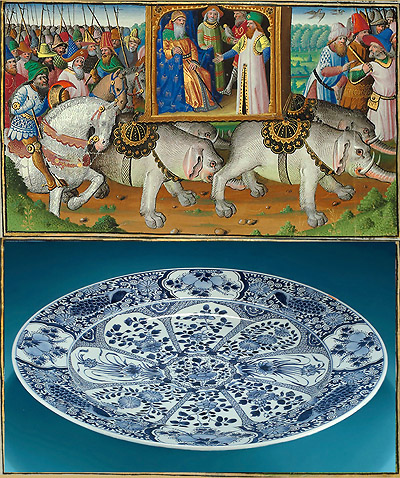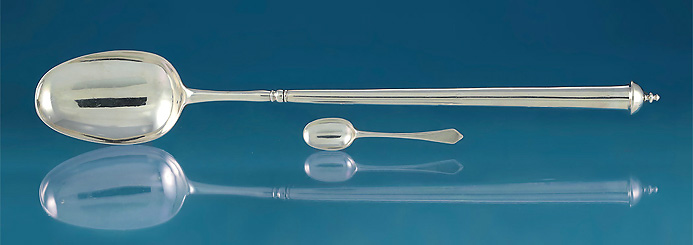|
Of good strong color, the deep round dish with a flattened lightly barbed rim,
the central roundel painted with "auspicious symbols",
including a banana or artemesia leaf above a double gourd and lotus head against tied ribbon scrolls and tassels,
encircled by two fine blue lines; the cavetto and rim divided into four wide and four narrow segments.
the wide segments of oval beach blooms alternating with two further auspicious symbols
beneath "Toatie" masks*, the narrow panels with tied ribbons;
the rim verso having two small flowers with tendrils and long leaves;
the sides with four jewel-filled ovals and four narrow panels of stylized "lingzhi" (mushrooms)
sided by vertical lines
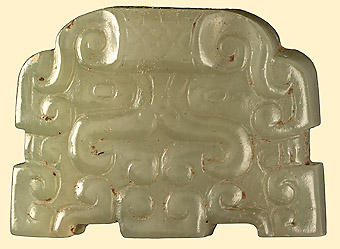
* "Toatie" (meaning glutton) represents one of the oldest symbolisms in Chinese decoration,
used on bronzes from the Shang Dynasty (c1600-1000 BC), with the purpose of warding off evil spirits.
Above is a Taotie mask carved from jade dating from China's
Eastern Zhou - Warring States period (475-221 BC) (Cleveland Museum of Art).
You will see the distinctive eyes, nose, mouth and locks of hair.
Legends vary, but it is said that the god devoured a man, but before it could swallow it,
its own body was damaged, "making a mysterious communication between people and Heaven (gods)".
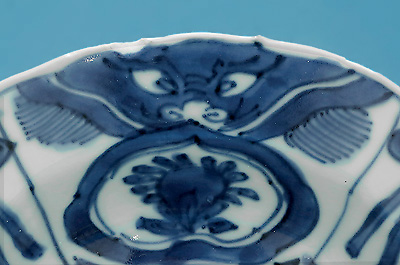
However, on klapmuts made for the West, this mask seems to refer rather to "Gala",
a mythological Indian god of gluttony whose image appears as two large "gentle" eyes,
often embellished with long lashes and a broad nose.
Gala's gluttony was punished by having to eat his own body until only the mouth
and upper part of the head and two tiny hands remained.
This image is widely observed throughout Southeast Asia.
Klapmutsen were made during the Wanli period for European use,
and exported via the Dutch East India Company.
The rim was flattened (in comparison to the Chinese taste bowl)
for support of the longer 17th century European spoon.
It is reported that these bowls were likely used to serve strawberries, cherries and other fruits -
and still being used today thusly on special occasions.
Condition : Excellent; expected light fritting to the high points on the outer rim;
some normal Kraak adhesion to footrim
6" Wide x 2.75" Deep
SOLD
#7688b
Please Inquire
|
